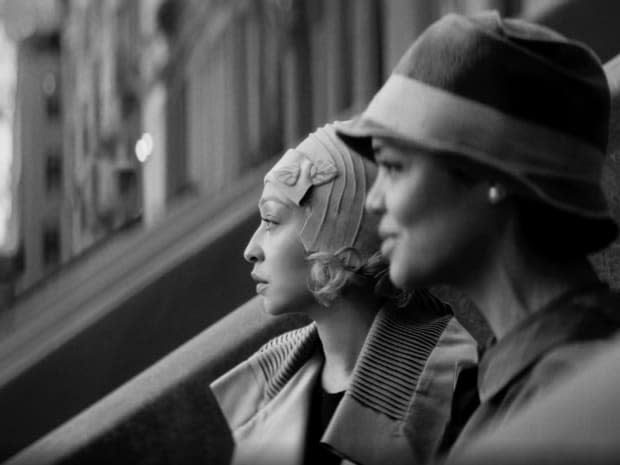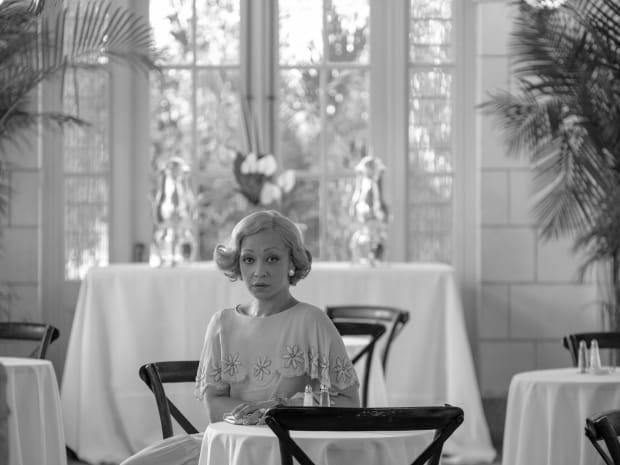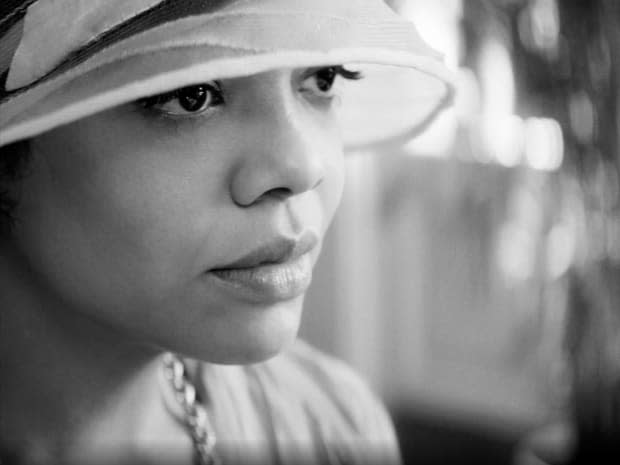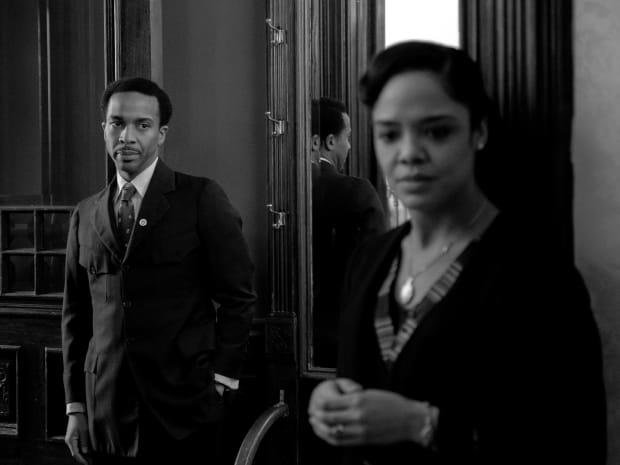In "Passing," Costume Designer Marci Rodgers Avoids Clichéd Flapper Fashion and Draws From Her Chicago Roots
She sourced a mix of vintage, rentals and original pieces to bring the story of Irene and Clare — two characters who are perfectly engineered for each other's destruction — to life.
Adapted from the 1929 Nella Larsen novella, "Passing" tells the story of Irene and Clare, two childhood friends who reconnect after years apart and become increasingly involved in one another's lives — and insecurities. Both are white-passing women of African descent, yet Irene (played by Tessa Thompson) embraces her African-American identity and marries a Black doctor; Clare (played by Ruth Negga), on the other hand, chooses to cross the color line and marries a racist, wealthy white man and lives as a white woman.
The film is set in New York City during the height of the Harlem Renaissance, and the costumes by Marci Rodgers reflect this vibrant Black artistic and cultural community. Rodgers, whose past work includes both television ("She's Gotta Have It," Wu-Tang: An American Saga") and film ("Chi-Raq," "High Flying Bird," "BlacKkKlansman"), began by reading Larsen's novella before poring over texts and images from the 1920s.

Photo: Courtesy of Netflix
In a word, Rodgers describes her approach to costuming "Passing" as "honest": "What I mean by that is, I do my research and make sure the costumes look as accurate as possible." She used Pinterest to create mood boards for the costuming, and sourced a mix of rentals, vintage clothing, and original pieces to bring the story of Irene and Clare — characters perfectly engineered for each other’s destruction — to life.
The movie opens with Irene seeking respite from the summer heat at the rooftop bar of a luxury New York hotel. She uses her cloche hat's brim as a shield, to avoid making eye contact with the white patrons. Despite her attempts at being inconspicuous, she soon locks eyes with Clare, a childhood friend, who sports a dropped-waist summer dress and bleached blonde bob. Their lives become increasingly intertwined over the course of the film.

Photo: Courtesy of Netflix
"Passing" marks the directorial debut of Rebecca Hall, herself an actor and the daughter of biracial opera singer Maria Ewing. Hall made a series of decisions that had an effect on the costuming, such as choosing a 4:3 aspect ratio, to focus less on sets or special effects and more on the interplay and dialogue between characters, and shooting in black and white. The latter is especially significant: Essentially, Hall sought to make a colorless film about colorism. (Of course, black-and-white films are made up of shades of gray; gray areas, for Hall, represent the complicated nature of race relations.) Naturally, this required Rodgers to reimagine her relationship with color, as she quickly learned that some hues didn't translate to the filming style.
"I had to shift my eyes to black and white," she says. In the end, she assigned unique, contrasting palettes to each of the protagonists: "I gravitated toward lighter/ethereal colors for Claire and more conservative/darker colors for Irene."

Photo: Courtesy of Netflix
Though the film is set in 1920s Harlem, Rodgers was careful not to fall into hackneyed visual tropes of flapper dress; she wanted to make sure that Claire and Irene came across not as caricatures but as real women. "These women were not flappers," she says — rather, they were upper-class Black women, more likely to adhere to respectability politics than to flout sartorial strictures of the era.
Though the costuming is true to the period, you don't see the shorter hemlines often associated with the Roaring Twenties anywhere in the film. Clare's wardrobe is cosmopolitan, representing her beguiling, almost feral appetitive demeanor and worldliness rooted in her adopted white identity and upward mobility — she is no "tragic mulatto," a recurrent trope in American literature and film. Irene, meanwhile, is outfitted in more conservative clothing, reflecting her practical and restrained character.
Rodgers often sprinkles personal touches into her costuming. In "Passing," Irene's husband, Brian (played by André Holland), wears a Howard University pin on his lapel, a nod to Rodgers' alma mater. A proud native of Chicago, Rodgers draws inspiration from her stylish family members and her upbringing in the city — check out her #justakidfromchicago hashtag on her Instagram. In fact, when Oscar-winning costume designer Ruth E. Carter, a mentor to Rodgers, met her dapper father, she insisted that he appear in "Chi-Raq." (Rodgers' mentors also include the late Howard University professor Reggie Ray, director Spike Lee and costume designer Helen Huang.)

Photo: Courtesy of Netflix
"Passing" explores the consequences of accepting and denying one's Black identity. More importantly, it's a film that asks us to think more capaciously about identity: The character who suffers most is arguably Irene. She's unwavering in her African-Americanness, but though she identifies as Black, she, too, is passing. She pretends to be happy, knowing that her husband is restless in their marriage. The biggest takeaway from "Passing" is that life, when lived in front of others, is performative. Aren't we all passing? Many of us are compelled to be less than authentic more often than we would like.
Larsen's novella is almost a century old now, but Hall's adaptation reminds us that this topic is more relevant than ever, as racial and gender identities are increasingly more destabilized. Clare and Irene represent different sides of the same coin of racial self-determination — the two limited options given to women of color at the time. With the help of Rodgers' costuming, this complicated story has been made more compelling by helping the characters embody the phenomenon of passing.
Never miss the latest fashion industry news. Sign up for the Fashionista daily newsletter.
